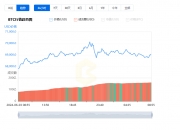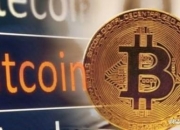媒介融合(Media Convergence)
Media Integration
媒介融合這一概念最早由美國馬薩諸塞州理工大學的伊契爾·索勒·普爾(Ithiel De SolaPool)教授提出的,其本意是指各種媒介呈現出多功能一體化的趨勢,主要指的是電視、報刊等傳統媒介融合在一起。
The concept of media integration was first proposed by Professor
其概念應該包括狹義和廣義兩種,狹義的概念是指將不同的媒介形態“融合”在一起,會隨之產生“質變”,形成一種新的媒介形態,如電子雜誌、博客新聞等等;而廣義的“媒介融合”則範圍廣闊,包括一切媒介及其有關要素的結合、匯聚甚至融合,不僅包括媒介形態的融合,還包括媒介功能、傳播手段、所有權、組織結構等要素的融合。 也就是說,“媒體融合”是信息傳輸通道的多元化下的新作業模式,是把報紙、電視臺、電臺等傳統媒體,與互聯網、手機、手持智能終端等新興媒體傳播通道有效結合起來,資源共用,集中處理,衍生出不同形式的信息產品,然後通過不同的平臺傳播給受眾。
The concept include two kinds of synthetic and broad-based concepts: >a new media formations such as 美國新聞學會媒介研究中心主任Andrew Nachison將“融合媒介”定義為“印刷的、音頻的、視頻的、互動性數字媒體組織之間的戰略的、操作的、文化的聯盟”,他強調的“媒介融合”更多是指各個媒介之間的合作和聯盟。媒介技術的進步使傳統媒介之間的界限日漸模糊,新媒介形式層出不窮,媒介終端可實現的功能逐步強大,這是媒介融合發展的基礎。
The Director of the American Press Media Research Centre, Andrew Nachison, “ E/a2%Ehw_2%Ehw_2%Ew_2%Ew_2%Ew_2%Ew_2%Ew_2%Ew_2%Ew_2%Ew2Ew2%Ew2%Eb2%Eblink =2%Eb2%Eb2%Eb2%Eb2%Eb2%Ebl%Ebl%AEbl%Ebl%Eb2%Eb2%Eb2%Eb2%Eb2%Eb2%Ebl%Eb2%Ebl%Ebl%Ebl%Ebl%Ebl%EEEEEEEEEw_Eb2%Eb2%Ebl%Ew_Ew_Ev_Ew_Ew_E. 從媒介融合的發展來看,最初的“媒介融合”是組織的融合,這種結合往往是依靠外部的力量(如行政力量)使媒體結合成一個共同體,如中國的許多報業集團都屬於這種類型,但這類集團往往只是名義上的,是一種十分鬆散的組合,沒有形成有機分工的態勢。
In terms of the development of media integration, the initial “media integration” is organizational integration, a combination that often relies on external forces, such as administrative forces, to bring the media together into a common set, such as many of China's press groups, which are often merely well-known, loosely organized, without creating a dynamic division of labour. 第二階段的“資本融合”比前一階段有了很大的進步,因為它是在市場的作用下使有實力的媒介集團在資本市場上完成對其他媒介或媒介集團進行收購或者兩個媒介組織之間通過資本市場進行的合併。這種通過媒體之間的整合與併購,在傳媒業中是以規模出效益的。
The `capital integration' of the second phase represents a significant improvement over the previous phase, as it enabled , , 第三階段是“傳播手段融合”階段,從小範圍來說是指利用新技術改造傳統媒體;從大範圍來說指大型的傳媒集團不同媒介的傳播手段在一個大平臺上進行整合,實現這些媒介之間的內容相互推銷和資源共用,報紙、廣播、電視、網路全部用一套班子,由“多媒體編輯”統籌策劃,將採回的材料和新聞用於集團旗下的各個媒體。
The third phase is the “broadcasting integration” phase, which, to a lesser extent, refers to the use of new technologies to transform traditional media; and, to a large extent, to the integration of the media of large media groups on a large platform where content is sold and shared among these media, using a full team of newspapers, radio, television, Internet, coordinated by a “multimedia editor” to use the material and news recovered in the various media under the umbrella of the group. “媒介融合”的最高階段是媒介形態的融合,新技術的發展日新月異,完全有可能在未來產生一種與今天的媒介形態完全不同的新媒介,這種媒介有可能融合了幾種甚至全部媒體的優點。
The highest stage of “media integration” is the integration of the media, the development of which is rapidly changing, with the potential to produce a new medium in the future that is completely different from today's one, which could combine the advantages of several, if not all, media. 其實媒介融合作為新聞傳播業的一種發展趨勢,很難用一兩句話概括得清楚,而且隨著實踐的發展,任何試圖描述現狀的語言在不可預測的實踐衝擊下都是無法全面準確概括媒介發展趨勢的,但是可以預見的是媒介融合將有幾個顯著特點:
In fact, the integration of the media, as a development of the news industry, is difficult to summarize in one or two words, and with the development of reality, any language that attempts to describe the state of affairs cannot provide a complete and accurate overview of the development of the media under an unpredictable impact, but it is foreseeable that the integration of the media will have a number of distinctive features: ①媒體間的合作性,無論是傳統媒體之間,還是新媒體之間,或者新舊媒體間,合作是融合的外部條件,包括技術合作和內容合作等全方位的合作將在媒體問展開。
Cooperation between the media, whether traditional or or between the new and the old media, cooperation will be an external element of integration, including full cooperation in technical and content cooperation. ②媒體與受眾的互動性加強,媒介融合必將把傳受者之間的互動發揮到極致,從目前媒體的運作來看,互動已成為不可或缺的環節,而在媒介融合中,互動將更為明顯。
The media and the audience are more interactive, and the media integration will bring to the fore the interaction between the transmitters, which, from the current operation of the media, has become indispensable, and it will become more evident in the media integration. ③媒介融合是在技術的支持下實現的,網路技術、數字技術等的運用使媒介融合的水平和層次不斷得到提升,而且其前景無限,像網路技術發展以來短短的數年間就使傳媒環境發生了巨大變化,由此,媒介融合以技術為依托,將隨技術的發展而發展。以上這三方面將是媒介融合下出現的必然結果和趨勢。
The media integration is supported by technology , which has been used to keep the level and layers of media integration up and up to date and whose futures are unlimited. “媒介融合”就其表現形式而言,主要有兩種,其一是在傳媒業界跨領域的整合與併購,並藉此組建大型的跨媒介傳媒集團,打造核心競爭力,應對激烈的市場競爭;其二則是媒介技術的融合,將新的媒介技術與舊的媒介技術聯合起來形成新的傳播手段,甚至是全新的媒介形態。
“Medical integration” in its form consists of two main types, the integration and acquisition of cross-domain competitions in the media industry 媒介的誕生、發展與科技的創新有著天然的聯繫。每次技術創新都催生新媒介形態的產生,帶來媒介格局重新建構,引導媒介發展大趨勢。
There is a natural link between media birth, development, and technological innovation. Every time creates a new media landscape, leading to a major revolution in media construction. 浦爾教授提出“數位電子科技的發展是導致歷來涇渭分明的傳播形態聚合的原因”。數字技術出現前,平面媒體的文字、圖像信息與電子媒體的影像、語音信息形態之間存在固有邊界。數字技術的應用意味所有的信息都可以通過“0”和“1”的數字形式進行處理存儲,傳統媒介邊界走向消解,各種信息內容實現共用具有可能。數字技術同時帶來了信息終端數字化,媒介內容得以在電視、電腦、手機等各種具有兼容性的數字化媒介終端上得以實現流動共用。
“The development of digital electro-technology is the reason why digital media have an inherent edge of
- 2.網路技術衍生媒介融合的多媒體平臺
數字技術為信息的內容共用提供了支撐,而網路技術則實現了一個多媒體平臺,文字、圖像、聲音、影像等各種形式的信息得以在這個平臺上匯聚。特別是 Web2.0 的發展催生了博客、播客等媒體形態的興盛,媒介融合形態進一步擴大。網路技術的發展促進各種媒介信息平臺包括固定電話網路、有線電視系統、區域網絡等圍繞網際網路趨於融合,從而建立了一個“網路社會”,受眾在無所不在的以網路技術為支撐的互聯網連接的各種終端上,獲取著傳統媒介時代無法想象的各項服務。
Digital technology provides support for the sharing of information, while Internet technology has created a multi-media platform in which information in all its forms, including text, images, voices, images, etc., is gathered. In particular, web2.0 , which has led to the growth of media styles such as blogs, podcasts and the expansion of media landscapes.
- 二、競爭因素———媒介融合的直接推力
媒介競爭壓力直接推動媒介融合的發展,新、舊媒體的競爭博弈要求兩種形態的媒介的融合,而個體媒介企業必然要通過媒介融合追求效益增長。
media competition directly drives the development of media integration. The new and old media competition calls for the integration of two types of media, while individual media enterprises necessarily seek efficiency gains through media integration.
- 1.新、舊媒體的優劣勢要求不同形態媒介的融合
媒介融合是擁有技術優勢的網路媒體與擁有內容優勢的傳統媒介在競爭的基礎上實現共同發展的需要。傳統媒介雖然具有信息內容的資源優勢,但由於其信息形式單一、信息傳播範圍狹小以及信息傳播方式的單向性,已經越來越無法滿足受眾的需求,新興媒介的技術優勢帶來的即時效應、交互性和便攜性的特點正好彌補此缺陷。
Media integration is the need for common development on the basis of the competition between network media and traditional media with content advantages. While traditional media have the advantage of information content, they are becoming less responsive to the needs of the public due to their monoforming, the narrow distribution of information and the one-sided nature of the way in which it is disseminated.
而新興媒介的內容則缺乏信息來源或者信息源真實性不可靠,因而新興媒介要建立良好的公信力和品牌度,必然要藉助具有內容優勢的傳統媒介。
The content of the new media, however, lacks information sources or the authenticity of the information sources, so that the new media can build good credibility and branding, necessarily through traditional media with content advantages.
- 2.媒介企業的競爭是媒體間融合的動力
任何企業活動最終目的都是實現效益最大化,傳媒企業亦如此,通過降低生產成本和交易成本來實現參與者的效益增值。各產業組織通過融合方式形成資源共用,投入資源的聯合使用所創造的產出大於每種資源分別生產所創造的產出之和,節約了生產成本。
The ultimate goal of any business activity is to maximize benefits, as does the media enterprise, which adds value by reducing and .
而由於交易成本的存在,企業有一種不斷將相關企業一體化的傾向。
And since there is a tendency for businesses to keep the related business intact.
媒介企業通過規模和範圍增強合作企業實力,提高對於產業鏈上下游的要價能力,一些媒介企業直接通過產業鏈縱向的融合來降低交易成本。
Media enterprises have increased their cooperation by increasing the ability of to increase the cost of integrating some media enterprises directly through
- 三、政策因素———媒介融合的外在助力
當技術條件成熟後,管制的放鬆和市場競爭的需要稱為媒介融合的關鍵因素。
When the technical conditions have matured, deregulation and the need for 大眾傳媒對社會的強大影響力以及媒介資源的稀缺,必然帶來政府的嚴格管制。
mass media influence and the scarcity of media resources necessarily leads to strict government control. 但是伴隨著數字技術與網路技術的發展,新的媒介形態產生,大眾媒介的地位開始減弱,數字新媒介的形成打破了原有的時空限制,政府在對媒介產業的規制上開始放鬆。
However, with the development of digital technology and Internet technology, the new media landscape has begun to weaken, with the formation of new media . 政府對媒介產業的內容生產的管制放鬆,積極鼓勵內容的生產,媒介信息產品也走向多樣化、個性化。同時,政府對於廣電、電信行業的規制也漸漸放鬆,三網融合成為全球整個信息通信行業的發展方向。
The government has relaxed its regulation of content production at , actively encouraging content production, and media information products are becoming multi-tempheated and personalized. In the same time, the government's regulation of the electricity and telecommunications industry has become more relaxed, and have become the development of the entire information industry worldwide. “媒介是人的延伸”,媒介活動根本在於吸引受眾註意力,受眾是傳媒市場活動的核心。受眾需要是一切媒介活動的起點、出發點,也可以說,是一切傳媒經濟活動的歸宿。媒介融合的內在原因正是在於人類需求的不斷提高。
“The medium is an extension of the human being.” Media activities are essentially at the heart of the media market
- 1.便捷性需求要求媒介內容的共用
由於經濟壓力和社會生活節奏的加快,受眾對信息需求的速度及內容日趨增長。受眾對於便捷性的需求實際上就是希望隨時隨地地獲取信息,需要媒介的信息傳播必須破除時間和空間的限制,這就要求原先各自獨立的媒介內容實現媒體間的共用,使得受眾能通過某一媒介獲取所需的任何信息。比如手機通過互聯網的融合獲得其他媒介的信息,從而隨手獲取信息,手機報紙、手機電視等滿足了民眾適應快速變化的社會生活及對各類信息的方便、快捷需求。
As a result of the acceleration of economic pressure and social life, the speed and content of the information needs of increased by the popular desire to have easy access to information at any time . This requires the sharing of media content in the formerly independent media, which allows the public to access any information needed through a medium. For example, mobile phones = https://wiki.balib.com/zh-w/%E4BA%92%E81%E7%D%91" Internet network > 社會快速發展,社會物質財富極大豐富,人們開始追求更高層次的精神和文化享受。媒體受眾不僅要求信息消費省時、省力,更要求品質、享受,希望達到文字、聲音、圖像等多種信息形式帶來的全方位感官調動,促使媒介進一步調動各種傳播手段和途徑,從而進一步促進媒介融合。比如報紙、雜誌單純的文字、圖片形式已慢慢無法滿足受眾,於是電子報紙、電子雜誌應運而生,享受到多方位的信息形式的衝擊。
The media are not merely demanding a full-scale movement from . The media are demanding more quality, enjoyment, and a full-scale sense move from 媒介產品的組合再分化
現代社會大眾化的生產和消費形態漸漸淡化,市場步入一個分眾化時代,即傳播“碎片化”的語境,以往依靠某一個(類)媒介的強勢覆蓋而“號令天下”的時代已經一去不復返了。受眾的分化形成了許許多多受傳者群落的碎片,媒介的信息傳播效果的實現,必須重視每一個細分的個性化族群的特征,以及每一位單一消費者的個性和心理需求。這就要求不同媒介形式和傳播平臺的產品組合,從而重新聚攏“碎片化”所導致分散的註意力資源。
The production and consumption patterns of the modern-day mass have gradually faded, and the market has moved into a compartmentalized era in which the language of “fragmentation” has been transmitted. The era of “deficitization” has been overtaken by the powerful influence of a single medium. This has required that and the personal and psychological needs of each single user. This has required
媒介之間的相互融合滲透的趨勢不是媒介從業人員主觀人為因素所導致的,它的出現是綜合了多種客觀因素而產生的。
The trend towards integration between the media is not caused by factors that are perceived by the media from the point of viewers, but by a combination of a variety of factors. 報紙因為其特有的文字承載信息的傳播特點,對受眾的文化程度要求比較高。電視聲、像並茂,具有直觀性,已成為大眾化的強勢媒體。而廣播收聽方便,並隨著私家車的普及,交通音樂台的熱播,正朝著小眾化、專業化的方向發展。
The newspaper is more culturally demanding because of the features of its unique text-carrying message. Television, likeness, and visuality have become a powerful and popular medium. Broadcasting is easy, and with the spread of private cars, traffic music stations are becoming more popular and professional. 網路媒體雖然以其線上傳播的方式,一開始就顯示出了發展強勢,但是在新聞傳播方面的先天缺陷和技術的不夠成熟使其在短時間內還很難一統當今的媒體天下。
web-based media have shown strong developments from the very beginning, but the inherent defects and immaturity of the technology in news broadcasting have made it difficult for them to unify today's media in a short time. 從目前傳統媒體和新媒體的共存情況看,媒體之間只有實現優勢互補,彼此融合,形成打造市場的合力,才能彌補單一媒體自身存在的缺陷。
According to the current coexistence between the traditional media and and the new media, only the achievement of positive synergies between the media and their integration into the creation of a market can remedy the shortcomings of a single media. 僅以報刊媒介為例,據新聞出版總署介紹,自2004年報刊社被獲准參與圖書、廣播電視、網路等其他媒體形式的經營,形成立體化經營的跨媒體集團,報刊業將會在打破行業和區域壁壘,跨地區、跨媒體經營等方面實現新突破;從媒介自身來講,日趨激烈的競爭使深化改革既成為形勢發展的客觀要求,又成為媒體加快自身發展的內在要求。實際上,目前各媒體已在資源共用、節目互動等方面開展了廣泛的合作,為媒介的融洽發展拓展了空間。
For example, according to the press and publishing agency, since 2004, the press has been authorized to participate in the operation of other media, such as graphics, radio and television broadcasts, the Internet, and other forms of media. The press will now be able to break new ground in breaking the industry and regional walls, cross-media ; from the media itself, heated competition has made the deepening of reforms both a developmental and an integral requirement for the media to accelerate their own development. 從歷史的角度看,媒介的發展經歷了一個從小眾到大眾,再向小眾回歸的過程,手機簡訊的發展就印證了這一趨勢。目前,人們可以通過電腦、手機隨時隨地接受到自己所需要各類信息,它們所具有的方便快捷、私密性強、價格便宜等特點,迅速贏得了用戶,開拓了市場。這就要求傳統媒體必須在信息來源、傳播方式、表現形式等方面做出調整,以儘快適應新的形勢和新的變化。
From a historical point of view, the development of the media has been marked by a process that has taken place from a small population to a large audience, and has returned to a small audience. The development of cell phone messaging is now evidenced by the fact that people can receive all kinds of information they need at any time through computers and mobile phones, which are easy, private, cheap, etc., and quickly win users and open markets. This requires traditional media to adapt to new situations and changes as quickly as possible in terms of source of information, mode of transmission, and form of performance. 現代傳播媒介的誕生、發展與科技革命有著天然的聯繫,科技發展的每一次革命,都帶來傳媒的大變革,都催生新的媒介形態的產生。當前,數字技術的發展日趨成熟,不僅廣播、電視、互聯網、資料庫、簡訊等電子媒體發展都建立在數字技術基礎上,而且報刊等平面媒體在出版過程中,也將信息處理成數字形態。可以說新技術、新產品的不斷推出,在客觀上為媒介融合提供了可能。各種新技術和高端產品的問世,對傳統媒體起到了正向引導作用,新舊媒體的融合不斷得到強化。
The natural connection between the birth, development and technological revolution of the current medium of transmission is that every revolution in technology has brought about a change in the medium of communication. Before that time, digital technology had matured, not only radio, television, Internet, , SMS .
注册有任何问题请添加 微信:MVIP619 拉你进入群

打开微信扫一扫
添加客服
进入交流群





















发表评论